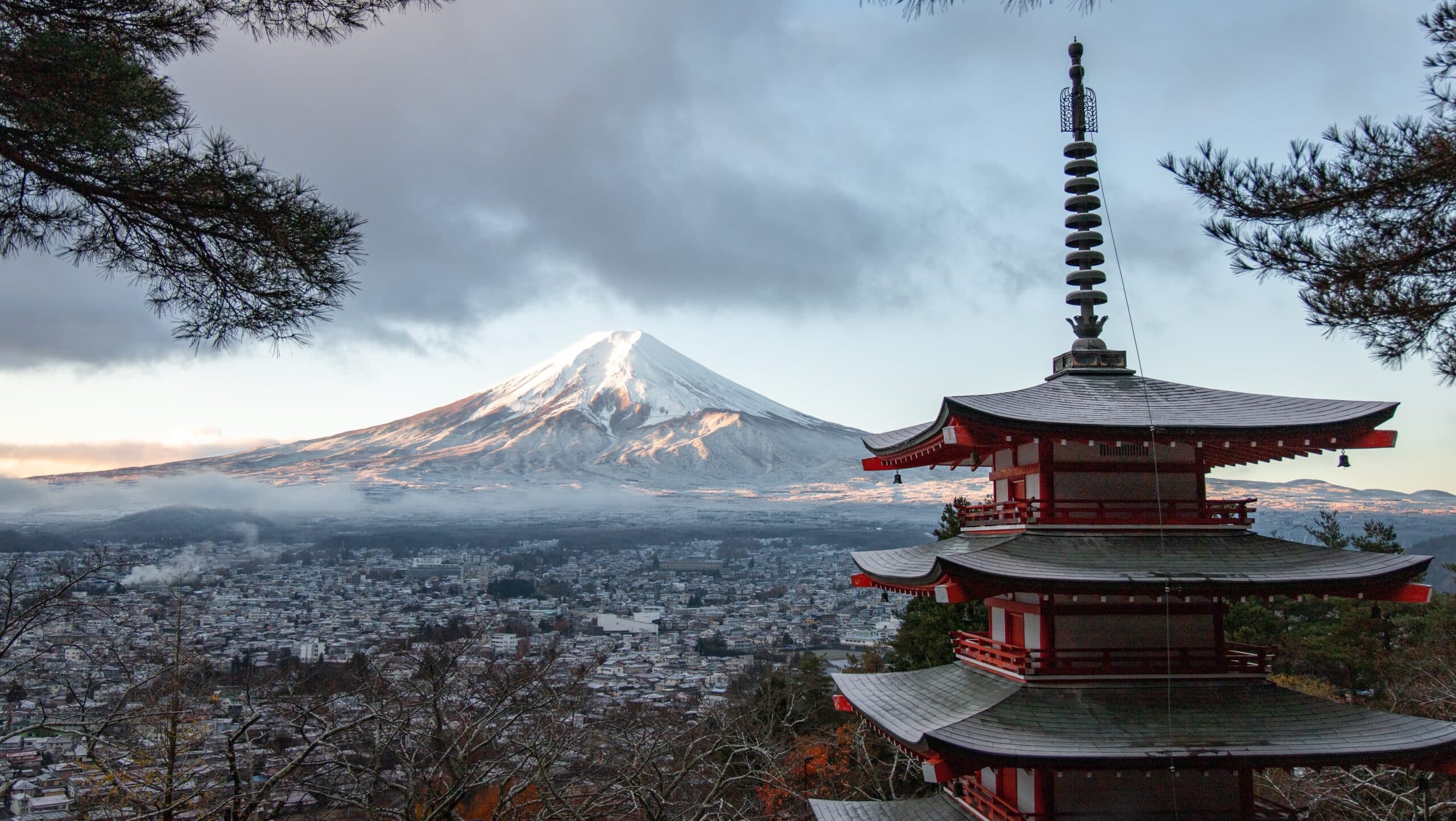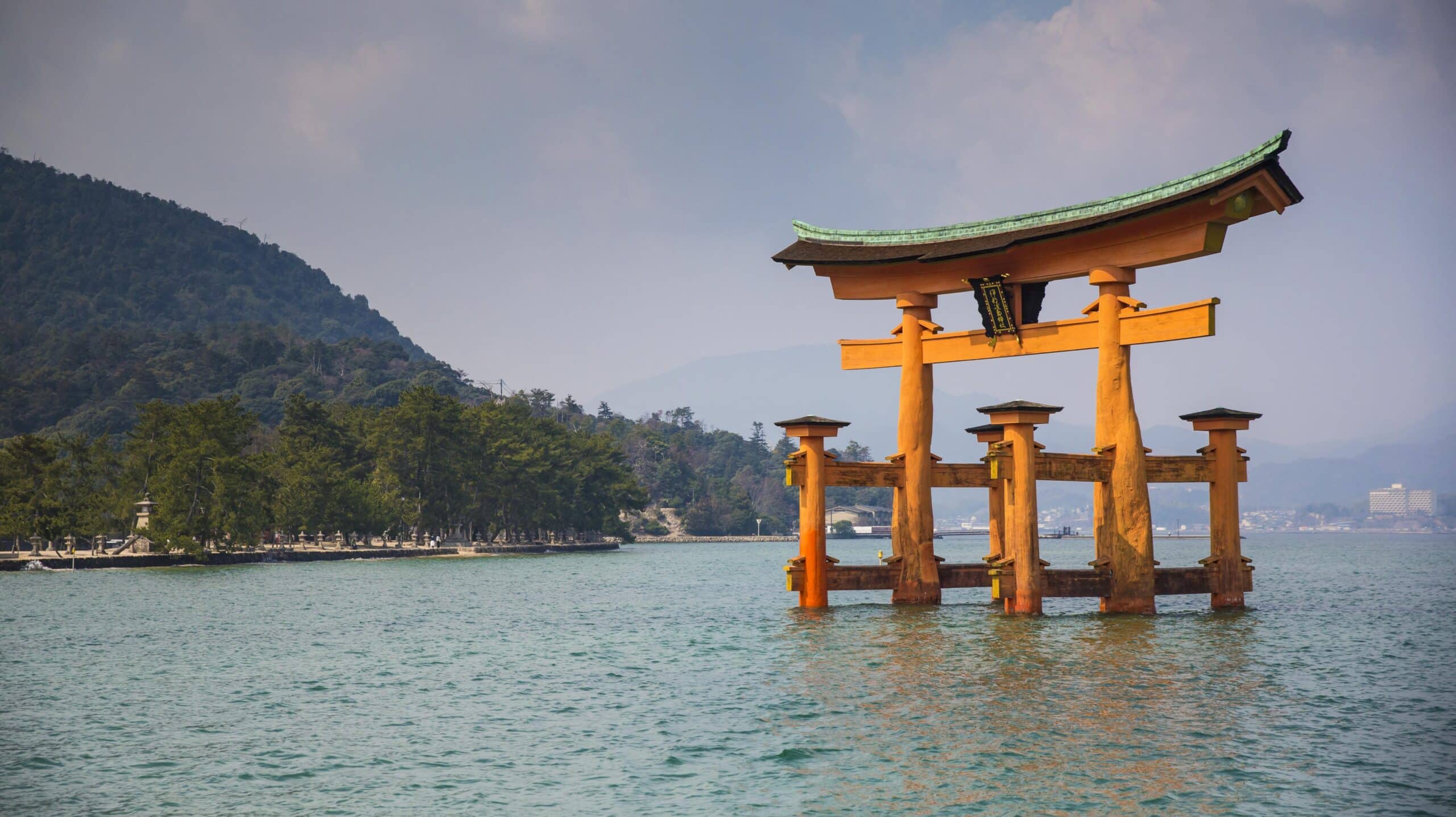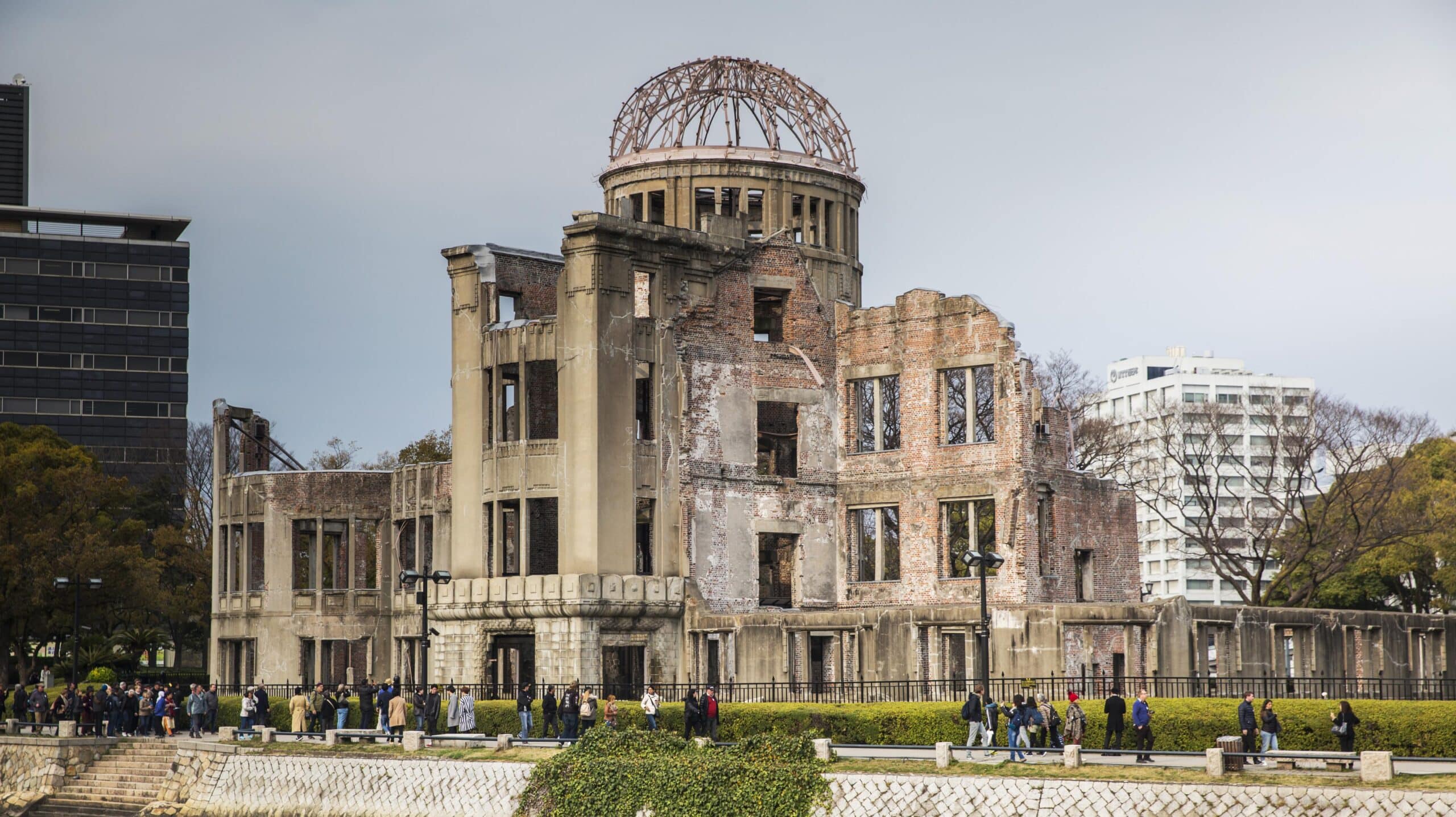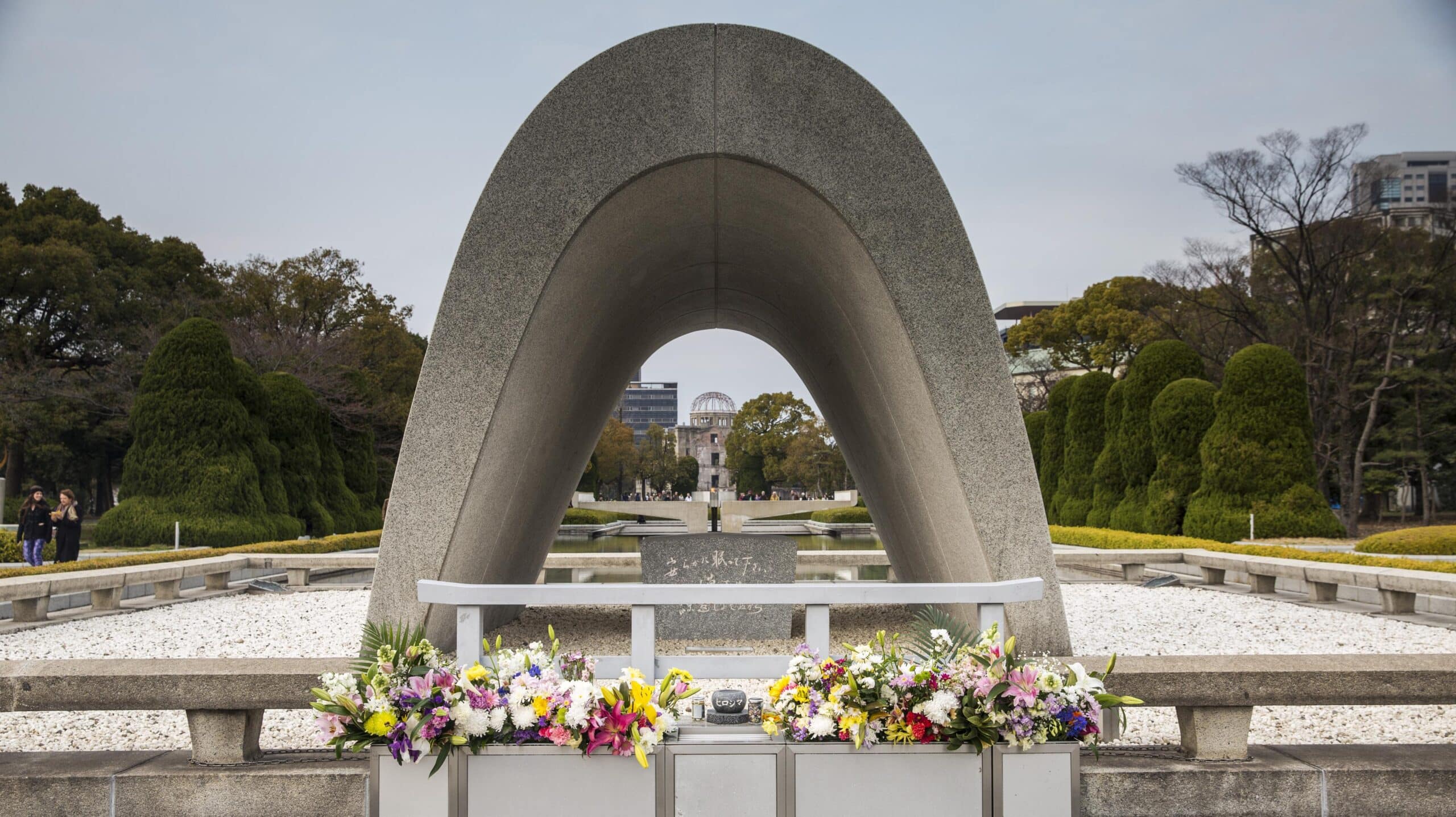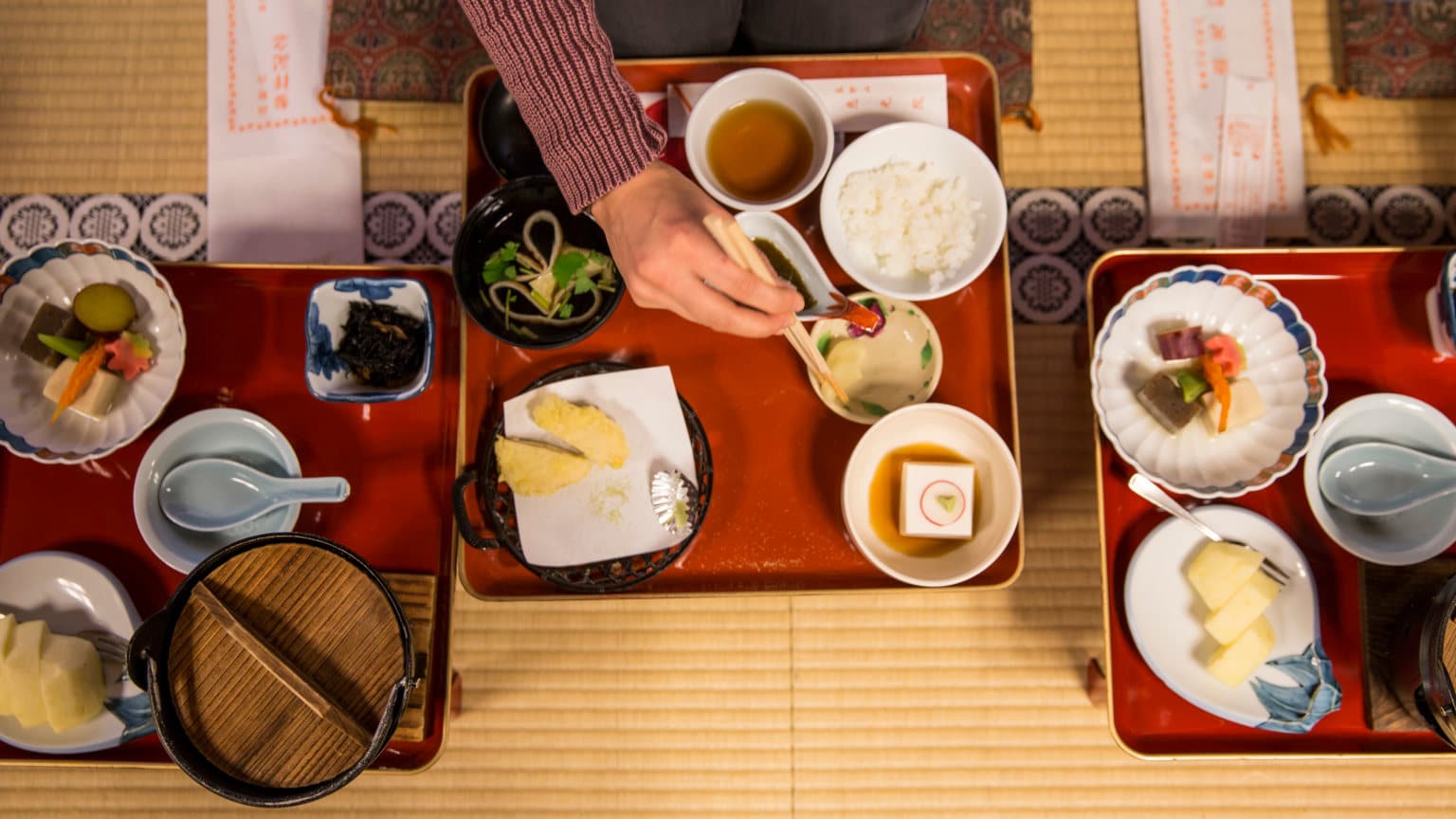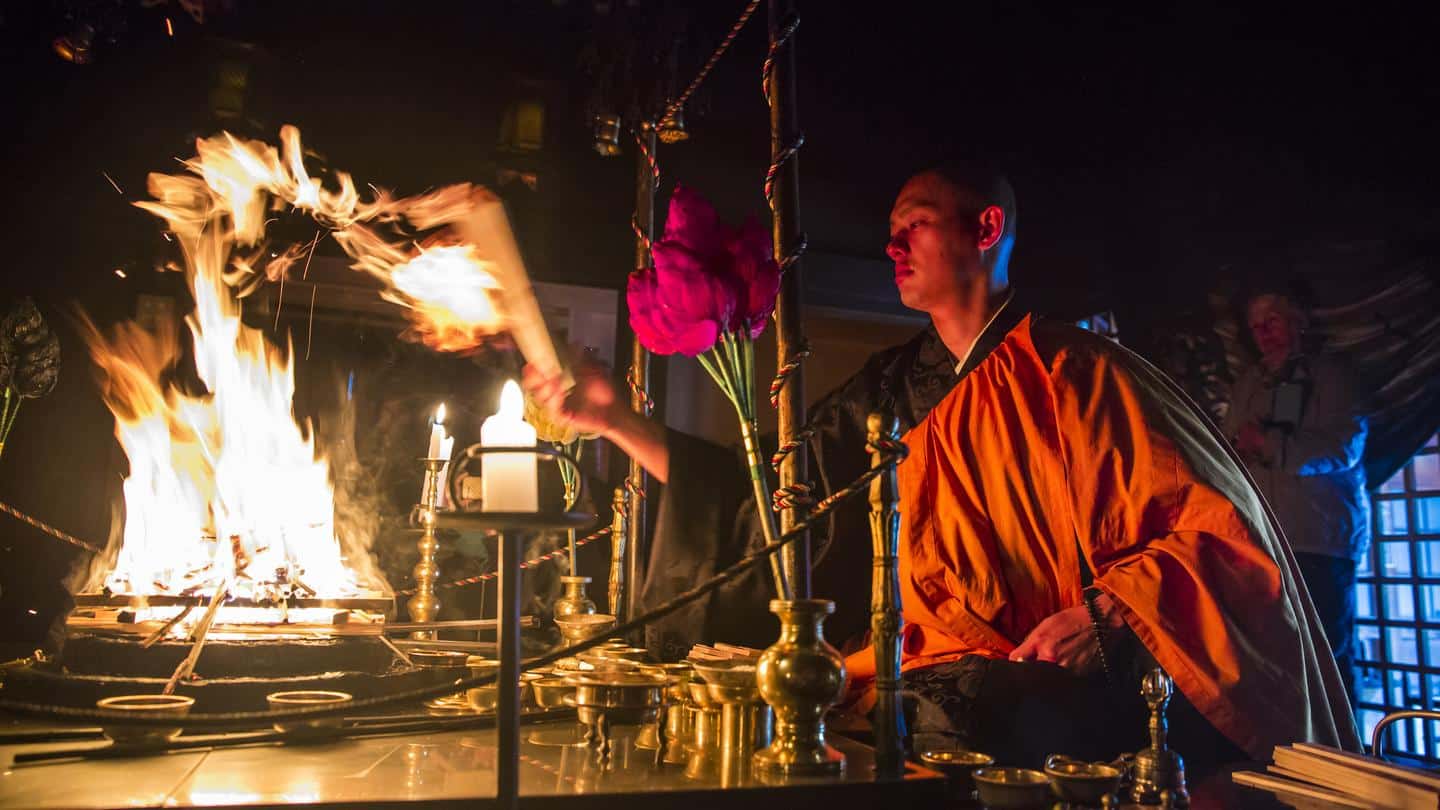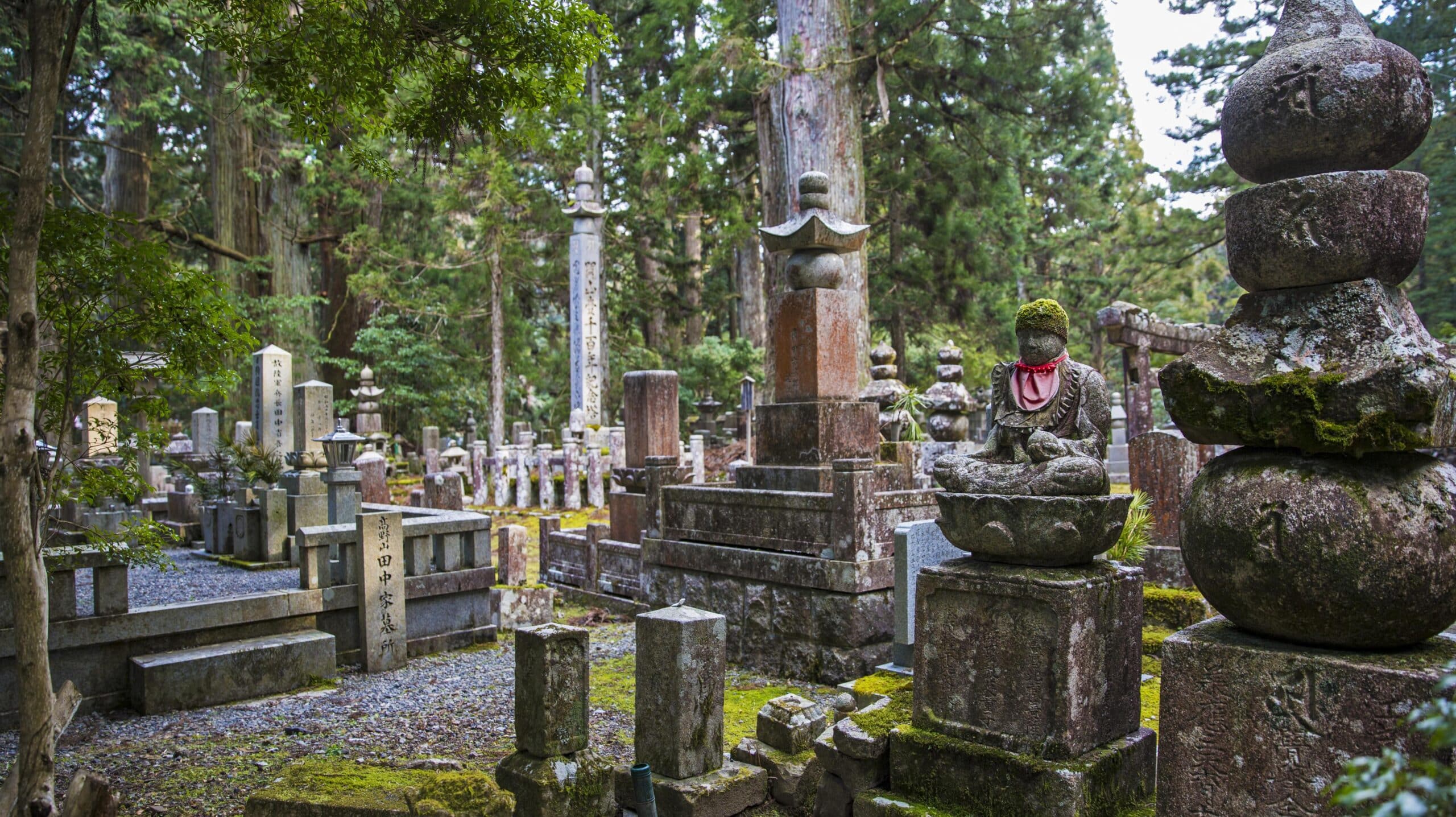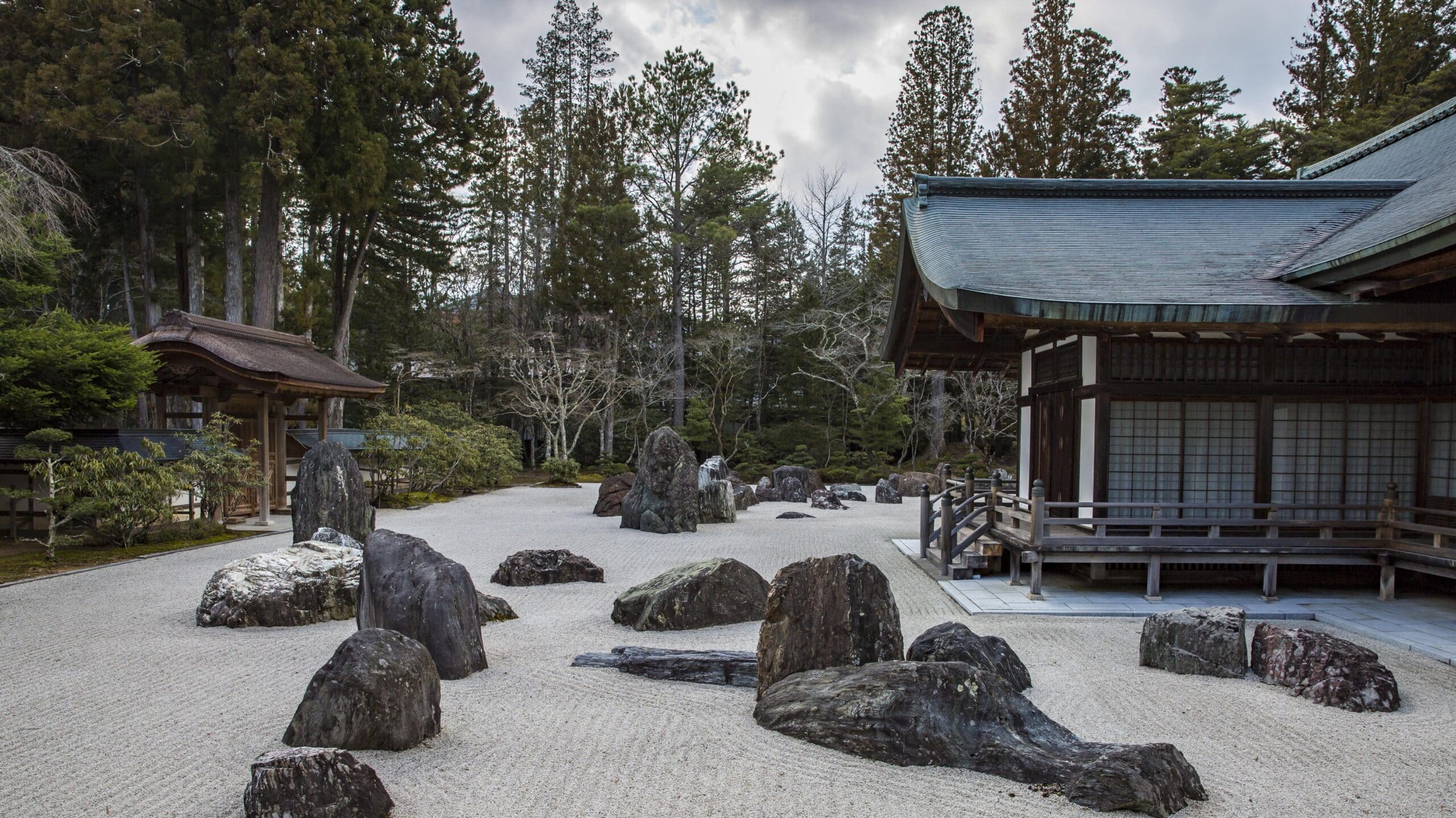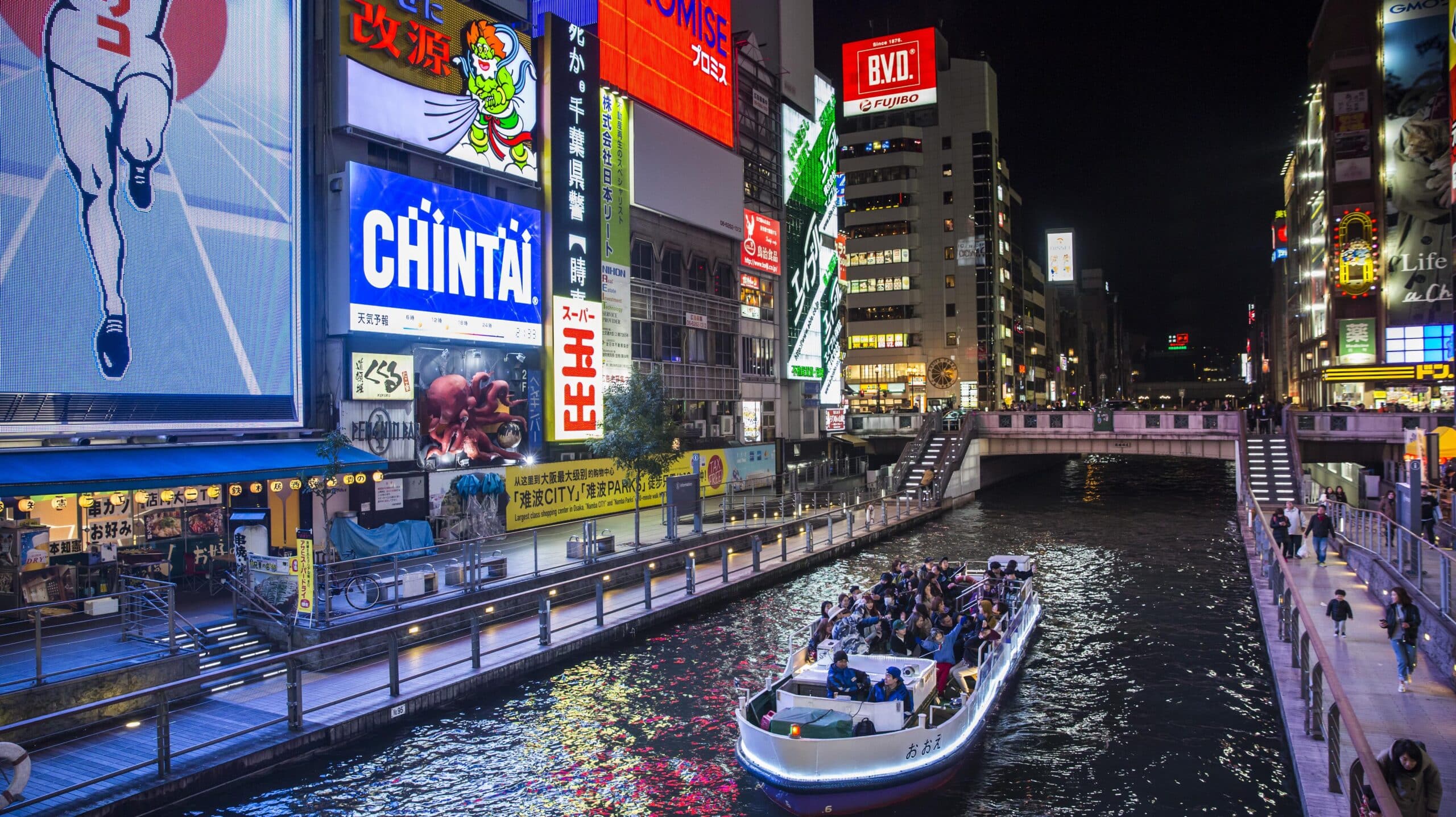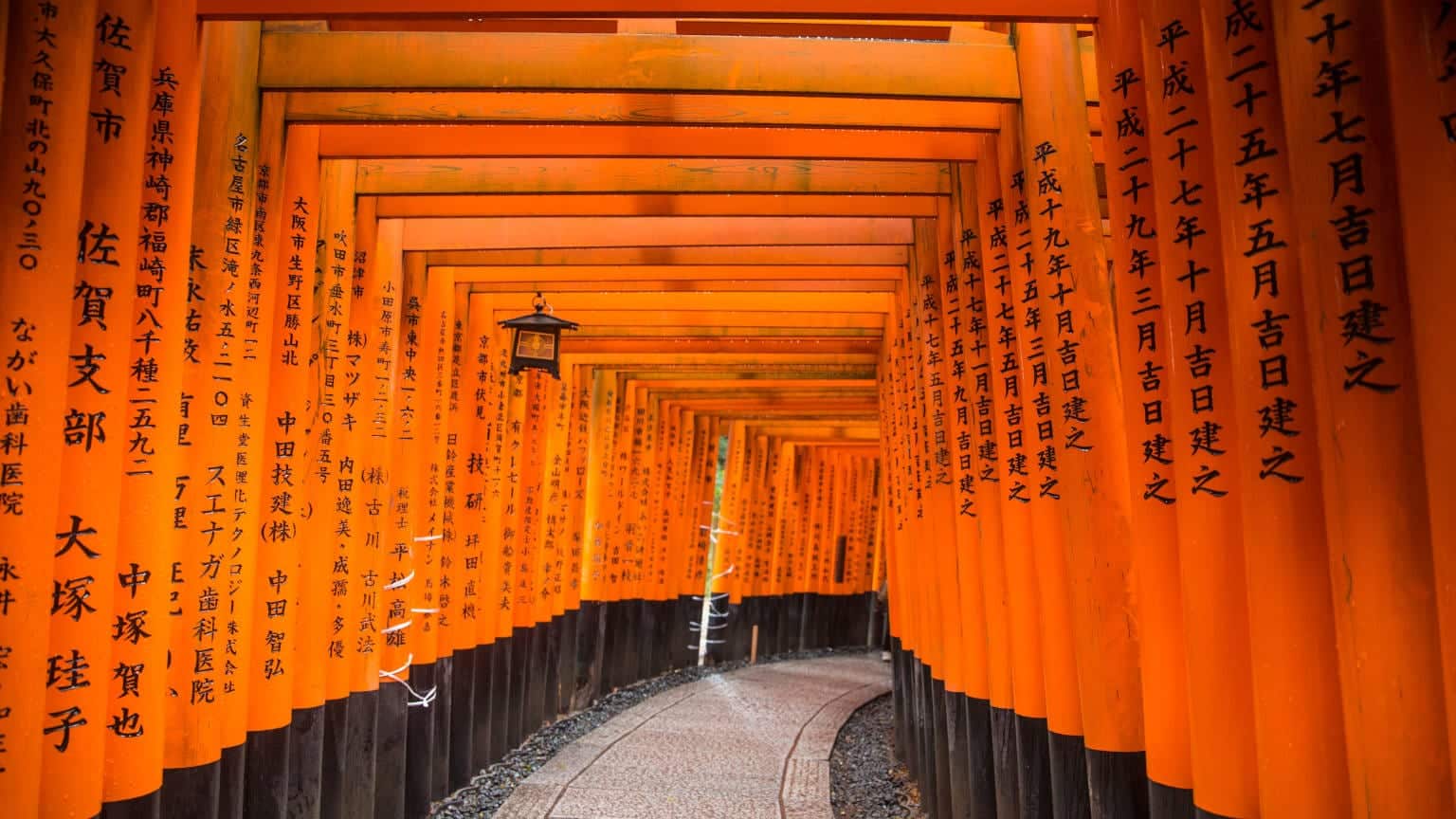Price
 $3515
$3515
Overview
Immerse yourself in the ancient traditions of Kōyasan's Buddhist monks, and contrast it with the modern flair of Tokyo's high rollers. Indulge in the region's culinary delights and take in the majestic views of Mt. Fuji. Experience the unique culture by staying in a mountain temple and relaxing in the traditional onsen hot springs. This journey offers a perfect blend of the traditional and contemporary aspects of Japan, providing a true taste of the country's rich culture. An ideal opportunity for educators seeking to expand their cultural horizons. Expend your cultural horizons in Japan, all while earning professional development credit with other educators.

This is a shared departure with G Adventures, which means there will be non-educator participants who book directly through G Adventures. The minimum age is 12 years old instead of GEEO's typical minimum of 18 years old.
What's Included:
- Overnight in Mount Kōya Temple, Kōyasan
- Hiroshima Peace Park and Museum visit
- Miyajima Island excursion
- Nijo Castle and gardens visit
- Gion walk
- Fushimi Inari shrine visit
- Lake Ashino-ko boat ride
- Traditional kaiseki meal
- 7-day Japan Rail pass
- G Adventures tour leader throughout
- 3 breakfasts, 2 dinners – allow $390-510 USD for meals not included
- Hotels (7 nts), mountain monastery (1 nt, shared facilities).
- All transport between destinations and to/from included activities by bullet train, tram, ferry, bus
What's Not Included:
- International air travel
- Incidentals
- Travel health and cancellation insurance
- Applicable visas
- Tips or gratuities
- Airport taxes
- Beverages
- Meals not mentioned in itinerary
- Optional tours and admissions
- Airport transfers
Itinerary Download PDF
Arrive in Osaka at any time. Due to the potential for flight delays or cancellations, we recommend that you plan to arrive in Japan at least a day in advance. This will also give you time to adjust to the time difference and overcome any jetlag. We can book extra hotel nights for you in Osaka before the trip. Please note that check-in at the hotel is usually around 2:00-3:00 p.m. There are no planned activities until an intro meeting around 6:00 or 7:00 p.m., usually in the hotel lobby. Check for a sign or ask at the reception desk about the exact time and location of the group meeting. Please make every effort to arrive in time for this meeting. If you are delayed and will arrive late, please inform us. Your tour leader will then leave you a message at the front desk informing you of where and when to meet up tomorrow. After the meeting, you might choose to get dinner at a nearby restaurant with your traveling companions and your tour leader to further get to know one another.
Journey to Mount Kōya, the religious headquarters of Shingon Buddhism founded in 816 by the Buddhist monk Kobo Daishi, one of Japan's most significant religious figures. The train ride up to the wooded mountaintop is possibly one of the finest rail journeys in Japan. For the final steep ascent, switch to the funicular and then hop on a bus to reach the monastery. Explore the temples and moss-covered Oku-no-in cemetery in the afternoon. In the evening, dine on shojin-ryori (typical vegetarian cuisine), experience the temple lodging (shukubo), and relax in a yukata or kimono. During the overnight stay in the mountain temple, witness the monks' routines. Early morning at the temple the next day, observe the monks praying before a vegetarian breakfast. Approximate travel time: 3 hrs by train, funicular, and bus
Early morning at Mount Kōya offers the opportunity to observe the monks as they pray. Breathe the fresh mountain air and soak in the beautiful surroundings before a vegetarian breakfast. Later, visit Oku-no-in, the most sacred site in Kōyasan and the location of Kobo Daishi's mausoleum. The area is surrounded by a massive cemetery, the largest in Japan with over 200,000 tombstones lining the path to Kobo Daishi's mausoleum. Be sure to see Torodo Hall (the Hall of Lamps), the main place of worship where more than 10,000 lanterns are kept burning day and night. In the afternoon, journey back down the mountain and board a train to Hiroshima, a historically significant city marked by the explosion of the first atomic bomb in 1945. Approximate travel time: 5 hrs by bus funicular, and bullet train
Walk through the Peace Park in the center of Hiroshima, a living memorial dedicated to the tens of thousands who died from the atomic bomb blast in 1945. Visit the statue of Sadako Sasaki, a young girl who died of leukemia as a result of the bomb blast, despite folding 1,000 origami paper cranes to appeal to the gods to make her well. See the frame of the Gembaku Dome, the sole building to withstand the explosion. Reflect, remember, and be reminded of the power we all hold to create peace. Take a trip to Miyajima Island, famed as one of Japan's most scenic spots, with a free afternoon to explore. See the famous floating Torii Gate, set out in the bay, which glows extraordinarily at sunset. The island is dotted with shrines and temples, populated by deer, and traversed with hiking trails for those who want to get some exercise. There are also shopping lanes full of souvenirs and tasty treats. Visit Miyajima at your own pace, and have the option to hike up to the peak of the island, Mt. Misen, to see spectacular views of the surrounding islands. Approximate travel time: 1.5 hrs (round-trip ferry)
Travel to Kyoto, the traditional heart of Japan, where you will visit the Kiyomizu-dera Temple, a UNESCO World Heritage Site. In the evening, walk through Gion, Kyoto's most famous geisha district, with your tour leader. Visit shops, restaurants, and ochaya (teahouses), where geiko (Kyoto dialect for geisha) and maiko (geiko apprentices) entertain. Approximate travel time: 1.5-2 hrs by bullet train
Visit the Fushimi Inari shrine, located just outside of Kyoto. Walk under the thousands of iconic torii gates (as seen in the film Memoirs of a Geisha) and enjoy the peaceful atmosphere. The shrine itself is at the base of the Inari mountain but includes many trails up to smaller shrines in the area. This afternoon, enjoy free time in this picturesque city. Kyoto is home to over 2,000 temples, including some of the most magnificent in the country, dating back centuries. Use your free time to continue exploring. The options are endless; the city also boasts museums, castles, and traditional gardens. Or opt to visit neighboring Nara or Osaka.
Hop aboard a passenger boat to cruise the waters of Lake Ashinoko. If you are lucky, on a clear day, you can capture a view of Mt. Fuji. The lake was formed from the caldera of Mt. Hakone following its eruption 3,000 years ago. Later, travel to Hakone and enjoy a Japanese multi-course kaiseki meal. The town is known for its natural hot springs; finish the day with a soak in an onsen. Approximate travel time: 3 hrs by bullet train, 30 mins by bus
Arrive before noon in Tokyo with time to explore this energetic metropolis. Opt to visit Ueno Park and its museums, Akihabara for cutting-edge electronics, Harajuku for funky fashions, Ginza for the highest of the high end, the grounds of the Imperial Palace East Garden, or just stroll the streets. Get a glimpse of the traditional Japanese life that still lies just under the modern surface. Approximate travel time: 2 hrs by bullet train
There are no planned activities today, so you may depart Tokyo at any time. Tokyo is a huge, vibrant city, and we highly recommend extending your stay in Tokyo by at least one day to allow more time to experience this incredible city. You may book post-trip accommodation at your hotel in Tokyo through us. Please note that check-out time from the hotel is usually mid-morning, but luggage storage services are available at the reception desk. Want more adventure? Book two or more GEEO programs in the same school year and receive a discount! GEEO will give you 10% off of the lesser value program(s) (up to 3 programs per year). If you would like to extend your time abroad but don't see another GEEO program that interests you, let us know. We can work with you to find a trip from our tour operator’s much larger catalog. Their tours are open to the general public and not designed specifically for educators, but we can still offer you and your travel companions a discounted educator price on any additional tours that you book.
*Itinerary Disclaimer: While it is our intention to adhere to the routes described on our website, there is a certain amount of flexibility built into the itinerary and on occasion it may be necessary, or desirable, to make alterations. The itinerary is brief, as we never know exactly where our journey will take us. Due to our style of travel and the regions we visit, travel can be unpredictable. The information on our website is a general guide to the tour and region, and any mention of specific destinations or wildlife is by no means a guarantee that they will be visited or encountered. Additionally, any travel times listed are approximations only and subject to vary due to local circumstances.
Details
Frequently Asked Questions
Please click here to go to our general FAQ, which has essential information that applies to all of our programs.Resources to Learn & Teach about Japan
Visit our recommended reading page to see the list of books GEEO recommends reading before your program (this is not required reading). We also have lesson plans and Pinterest boards that may be useful for you as you learn about your destination and prepare to bring lessons back to your classroom.Terms and Conditions
It is very important for you to visit our Terms and Conditions page before signing up for this program.GEEO Program Confirmation Process
We require a minimum of 6 participants for most GEEO programs. We officially confirm that a program will run once at least 8 people have signed up, which provides a margin for individual cancellations. Nearly all GEEO programs ultimately meet this enrollment quota, and in the rare event that a program does not meet the minimum requirement and GEEO cancels the program, we will work with you to find a suitable alternative or provide a refund of your deposit if you prefer. We encourage you to sign up for any program that interests you, and we will notify the entire group once 6 people are booked and again once 8 people are booked. We always emphasize the importance of exercising caution when making non-refundable travel arrangements, especially given the unpredictable nature of travel. For example, we typically recommend booking flights with flexible change/cancellation policies.Cancellation Policy
All cancellations must be submitted to GEEO in written form by emailing your request for cancellation to travel@geeo.org. If you do not receive a confirmation that we have received your written cancellation request, please call us at 1-877-600-0105. Verbal cancellation requests will not be honored.- If you cancel 60 days or more prior to departure, all your program fee payments will be refunded besides your $350 deposit which is kept on file for future use
- If you cancel between 30 and 59 days prior to departure, you will receive a 50% refund and your deposit is kept on file for future use
- If you cancel within 30 days of departure, you will receive no refund, but your deposit is kept on file for future use
Trip Notes
- NEW YEAR'S HOLIDAY: Visiting Japan during New Year (shogatsu) can be rewarding, as you have the opportunity to experience Japan's most important holiday, but many shops, restaurants, and sites are closed for at least one day between December 29 and January 4. It is recommended that you check the operating hours of any sites or establishments that you plan to visit to avoid disappointment. It is also common for prices for meals and other services to increase during peak tourist seasons or holidays, including New Year’s. Additionally, we may need to alter the itinerary to avoid closures and maximize your time during your trip. Hopefully, you will be able to experience some local customs and traditions and see how people in other parts of the world experience the holidays, which can an extra layer of festivity and cheer to your trip. Overall, traveling over the holidays can be a fun and rewarding way to learn about and experience another culture.
- JAPAN RAIL PASS: Please note that only foreigners traveling as a tourist are able to use a Japan Rail Pass. If you are a Japanese citizen/resident or traveling on a student/business visa, please advise us at the time of booking, as you will not be able to take advantage of the Rail pass.
- TATTOOS: Tattoos are not common or widely accepted in Japan. There is no cause for concern, but do your best to cover your tattoos when possible and note that you may not be permitted to enter public spas or onsens (hot springs).
- LUGGAGE: Unlike some other GEEO programs, this trip uses public transportation and no private vehicles. There will be times when you will need to carry your luggage for up to 15-20 minutes between your hotels and bus/train stations. Please try to pack lightly.
- OVERNIGHT BAG: Please note that you’ll need to prepare an overnight bag for a two-night stay in Hagi, as your main luggage will be sent on to Tottori.
- LANGUAGE: Travel in Japan is easy, clean, fast and efficient, however, please be aware that English is still not widely spoken. However, a lot of patience, a sense of humor, and respect for the local culture goes a long way in any Japan and will greatly enrich your experience.
Group Leader Description
All GEEO/G Adventures group trips are accompanied by one of G Adventure's group leaders, which they refer to as Chief Experience Officers (CEO). The aim of the group leader is to take the hassle out of your travels and to help you have the best trip possible. They will provide information on the places you are traveling through, offer suggestions for things to do and see, recommend great local eating venues, and introduce you to our local friends. Our itineraries often have plenty of free time to explore on your own. While not being guides in the traditional sense, you can expect them to have a broad general knowledge of the countries visited on the trip, including historical, cultural, religious, and social aspects. We also use local guides where we think more specific knowledge will add to the enjoyment of the places we are visiting – we think it’s the best of both worlds.Fitness Level
This trip includes walking and light hiking.Single Travelers
Half of GEEO’s participants travel by themselves, so please don’t worry if you do not have a travel companion for your trip. Our program fee is for one traveler in double-occupancy accommodation, and GEEO can find you a roommate of the same gender if you do not have a travel companion. Most of our programs have a “My Own Room” option, also known as a “Single Supplement,” which is an extra fee that you can pay to have a room to yourself. You will only incur an additional charge if you specifically request a single room. To see the price for the “My Own Room” option, please find your program on our extra services page. If you want to room alone, please email travel@geeo.org to request a single room.Accommodation
Japan is one of the most populous countries in the world and space is at a premium. Therefore, hotel rooms are small! Additionally, many Japanese hotels do not have designated non-smoking rooms. Therefore, we ask hotels to deodorize rooms before check-in. Ryokan are traditional inns found across Japan. Featuring tatami floors (soft mats of woven straw), futon beds, Japanese-style baths, cotton kimono (casual robe worn to lounge around or to head to the bath), and elaborate meals (often served in the comfort of your own room), a ryokan is the perfect place to experience traditional customs and hospitality. As ryokan are usually top-tier accommodations, most guests stay only one night, often to celebrate a special occasion or holiday. Don’t be intimidated by the formalities inherent to a stay at a ryokan, your hosts will welcome you the same way they do all their guests. Have fun and enjoy this relaxing opportunity to learn more about Japan’s unique customs. Minshuku are Japan’s answer to the Western bed and breakfast. Similar to ryokan, they have traditional features like tatami floors, futon beds, and Japanese-style baths. Minshuku are often family-run, and as such, they offer a great opportunity to interact with local people and learn more about the nation’s customs. More affordable and simpler than ryokan, minshuku tend to have smaller guestrooms, shared bathroom facilities, and any included meals (traditional, local, and delicious) are served in a communal dining room. Please note that some of the traditional Japanese inns used on this tour only offer shared bathing facilities. This means that individual shower stalls will not be available, instead several shower stations are available in an open, same-sex bathing area. Shared bathhouses and onsen (hot springs) are an essential part of Japan’s culture, traditionally serving as a place for men or women to gather, relax, and discuss the day's happenings.Joining Instructions
Day 1 is an arrival day, and no activities have been planned. Upon arrival to the city on Day 1, or earlier if you have booked pre-accommodation with us, please make your way to the joining hotel. Please note: Check-in time will be in the afternoon. Once you arrive at the hotel, look for a note at reception from your tour leader. This note will give the details of your Welcome Meeting on Day 1, usually between 6:00 p.m. and 7:00 p.m., during which you will get a chance to meet your tour leader and other travelers, as well as learn more about how the tour will run. If you don’t see a note, please ask reception for details. If you miss the Welcome Meeting, your tour leader will leave a note at reception for you with any information you may need and with instructions for the next morning. Getting to Hearton Hotel Nishi Umeda- By train: The nearest station is JR Osaka station, approximately 3 mins walking.
- From Kansai International Airport: By train: Take a train from Kansai Airport Station (1F). The JR Kansai Airport Rapid Service takes about 75 mins, and the train ticket is ¥1,210 JPY. By Airport Limousine Bus from Terminal 1: Depart from bus stop #5. Tickets can be purchased on floor 1F at the Airport bus stop C Ticket Window. By Airport Limousine Bus from Terminal 2: Depart from bus stop #1. Tickets can be purchased on floor 1F at the Airport bus stop A Ticket Window. It takes roughly about 65-80 mins and costs ¥1,600 JPY. Get off at HERBIS Osaka, then walk towards HAL Osaka building for about 2 mins.
- From Osaka International Airport (Itami Airport): Take the Airport Limousine Bus from bus stop #9. It takes roughly 30 mins and costs ¥650 JPY. The bus tickets can be purchased at ticket vending machine near the bus stop. Get off at HERBIS Osaka, then walk towards HAL Osaka building for about 2 mins.
Emergency Contacts
Should you need to contact G Adventures during a situation of dire need, it is best to first call their local G Adventures office. If for any reason you do not receive an immediate answer, please leave a detailed message and contact information so they may return your call and assist you as soon as possible. G Adventures Local Office (Japan) During office hours, Mon-Fri 9:30-18:00 Local Time From outside Japan: 1st contact +81 3-6659-9074 (2nd contact +81 80 6779 1851) From within Japan: 1st contact +81 3-6659-9074 (2nd contact +81 80 6779 1851) After office hours emergency number Primary phone: +81 80 6779 1851 (from within Japan: 080 6779 1851) If you are unable for any reason to contact the local office, please call the numbers listed below, which will connect you directly with the 24-hour Sales team, who will happily assist you. Toll-free, North America only: 1 888 800 4100 Calls from UK: 0344 272 0000 Calls from Germany: 0800 365 1000 Calls from Australia: 1300 796 618 Calls from New Zealand: 0800 333 307 Outside North America, Australia, New Zealand, Germany and the UK: +1 416 260 0999Packing List
Please read this article on GEEO’s blog for our staff’s suggestions on the best gear to pack for your upcoming travels. You must be prepared to carry your own bags and be comfortable carrying them up and down stairs, on and off transportation, and to hotels. As a rule, we try not to have to walk more than 15-20 minutes with your bags, which is why we recommend keeping the weight of your bags between 22-30 lb. Most travelers carry a backpack or rolling bag of small to medium size. No XXL bags please! A daypack is also essential for carrying everyday items. Space is limited on transportation, so there is a limit of one main piece of luggage per person plus a daypack per person. Health & Safety- N95/KN95 face masks (at least a few just in case there is an outbreak within your group)
- Hand sanitizer
- Rapid Covid tests/antigen tests (optional)
- Shawl or scarf (for temple visits)
- Raincoat and/or umbrella
- Personal clothing for cold weather – we recommend packing 8-9 days of outfits so you only have to do laundry once
- Light fleece (for flight over)
- Comfortable waterproof walking shoes
- Daypack
- Sunblock
- Sunglasses
- Sun hat
- Small towel and swimwear
- Watch or alarm clock
- Toiletries
- Camera
- First-aid kit, including: lip salve, aspirin, bandaids, anti-histamine, Dramamine, Imodium or similar tablets for mild cases of diarrhea, electrolyte powder, insect repellent, extra prescription drugs you may be taking
- Travel pillow
- Money belt
- Water bottle
- Phone/tablet for internet – most hotels have WiFi
- Chargers for electronics as well as converters/adapters, if needed
- AirTags or Tile trackers
- Packing cubes
- Flip-flops/Sandals
- Earplugs
- Snacks – packing a few granola bars is a good idea; you can buy snacks when you get there too, so don’t go crazy here
- Ziplock bags for wet clothing
- Reading/writing material
- Hand sanitizer/baby wipes
- Passport (with photocopies)
- Any entry visas or vaccination certificates required
- Travel insurance ID card
- Flight itinerary/boarding pass(es)
- USD/EUR cash
- Credit/debit card
- G Adventures vouchers
- GEEO Classroom action plans for your group – this is sent a few days before departure
Laundry
Laundry services are offered by some of our hotels for a charge. You can also use a local laundromat, if necessary. We recommend packing enough clothes so you don't have to do laundry.Passports and Visas
All GEEO programs require that the participant have a valid passport. Please see our general FAQ for information on obtaining a passport. As with all of our trips, we try to provide the most accurate information we can, but governments sometimes change visa rules. It is your responsibility to double check the information we provide below by searching here. U.S. citizens do not need a visa to travel to Japan. Non-American participants should check with their government or nearest Japanese Embassy to find out if they need a visa.Money Exchange
The local currency is Japan is the yen (¥ JPY). As currency exchange rates fluctuate, we ask that you refer to the following website for daily exchange rates: www.xe.com. 7-Eleven Convenience stores are ubiquitous throughout Japan, and nearly every one has an ATM where you can withdraw the local currency. We do, however, recommend that you bring at least $200 USD in cash for emergency use or in case you have trouble with the ATMs. Major credit cards are accepted in most shops, but you may be charged an international transaction fee; ask your financial institution about their international fees. Please note that if you are carrying U.S. dollars, the bills should be in good condition (i.e., not torn, wrinkled, or marked on in any way) and dated recently.Tipping
Tipping is not practiced in Japan. Leaving money at restaurants, in taxis, etc. will simply cause confusion! However, at the end of each trip, if you felt your G Adventures tour leader did an outstanding job, a tip would be appreciated. The amount is entirely your personal preference, but as a guideline, $5 USD or around ¥725 JPY per person per day would be appropriate.Vaccinations
GEEO cannot provide any medical advice, so it is very important to consult your doctor or a travel clinic about which vaccinations you will need for your trip. We recommend contacting Passport Health (http://www.passporthealthusa.com/), which has travel clinics located throughout the United States. You can also check the CDC's recommended vaccinations for your destination. Please take this seriously!Flights
We find the best prices for flights are often available around 90 days before departure, but of course this varies greatly from route to route and year to year. You should wait until this trip is confirmed before you book non-refundable flights. GEEO and G Adventures bear no responsibility for any flights purchased before the trip is confirmed. This program begins in Osaka and ends in Tokyo. Please double-check our itinerary for the date by which you must arrive in Osaka. You may want to arrive in Japan one or more days early in case you have flight disruptions. You can arrive at any time you choose, but try to make it in time for our 6:00 p.m. Welcome Meeting on Day 1. You can depart from Tokyo any time on the final day of the program, or stay later to see more of the city.Plugs and Converters
There are two components to provide external power to your device: adapters and transformers (also called electrical converters). The adapter is for your device's plug, adapting the prongs on a standard U.S. two- to three-pronged power cord to fit the local outlets. The transformer/converter changes the local voltage to the voltage used in the U.S. Japan uses Type A plugs, which is the same plug design used in the United States. However, the outlets only accommodate two-pronged plugs, so if you have a device with a grounding plug, you will need a 3-prong to 2-prong plug adapter. Voltage in Japan is 100 Volts. U.S. outlets are 120V. Most new devices (phones and laptops) can handle the different voltage rates, but some devices only work on the U.S. standard of 120V. Check your device to see what voltage range it handles. Most transformer blocks will have an “Input” line that defines its voltage capacity. For example, “Input: 100-240V” means that it will work on voltages from 100V to 240V. If your transformer can’t handle the different voltage, you’ll need to purchase a voltage converter. You can find world regional voltage converters power packs at various vendors.Expectations
Before you decide to travel with GEEO, it is important that you read all of the information about the program you are considering. Remember, our programs are quite adventurous.- The purpose of the accommodation is to provide a safe, well-located place for you to sleep. We use simple hotels to keep these trips as inexpensive as possible.
- We use a mix of transportation that gets our guests from location to location safely. Sometimes you will have full days of transportation as our trips tend to cover a lot of ground. The transportation will often be an adventure in itself.
- You must be able to easily carry or roll your luggage, so do not over-pack.
- This trip occurs in locations where it is warm to hot during the day. Please make sure you have thoroughly read the itinerary and can handle the group activities, which sometimes include day hikes with your daypacks.
- We recommend always carrying snacks with you. Meals can sometimes be far apart.
- Please make sure you understand the role of your tour leader on this trip as they are not the traditional “guide” you may be expecting. While our trips are educational, they aren’t study/lecture trips. We want you to learn through exploring, and much of your experience will be based on how active you choose to be in acquiring knowledge and interacting with locals.

